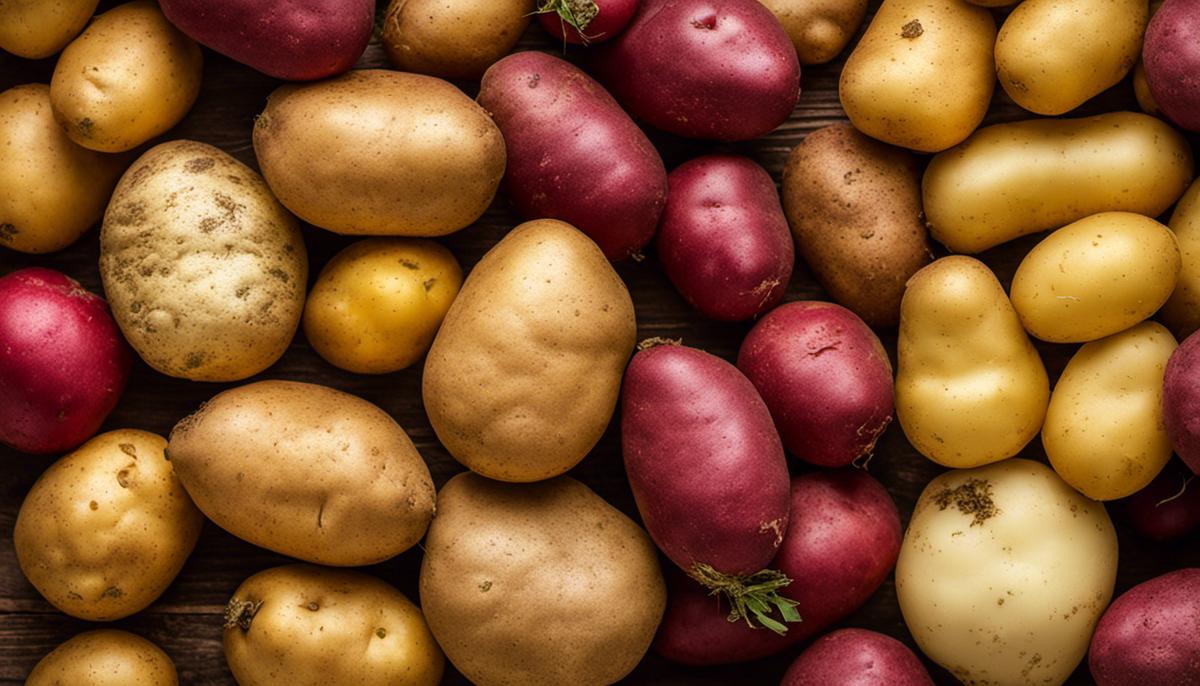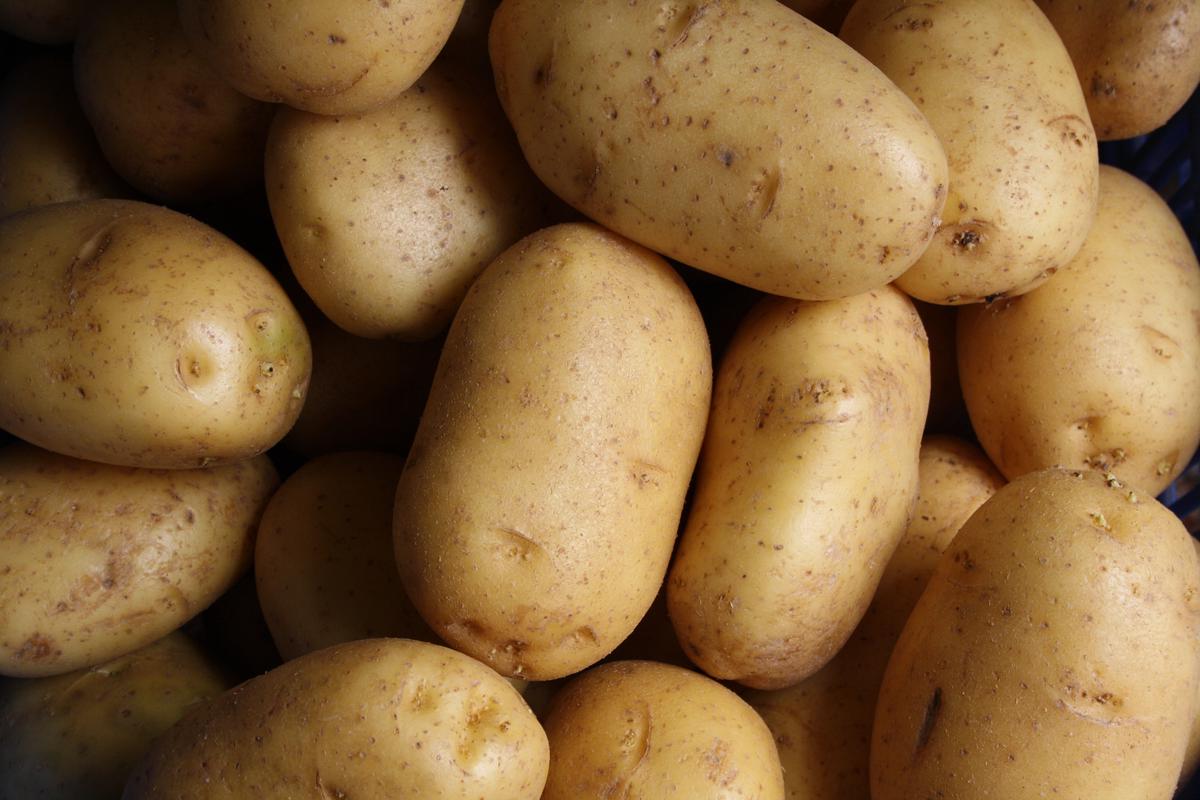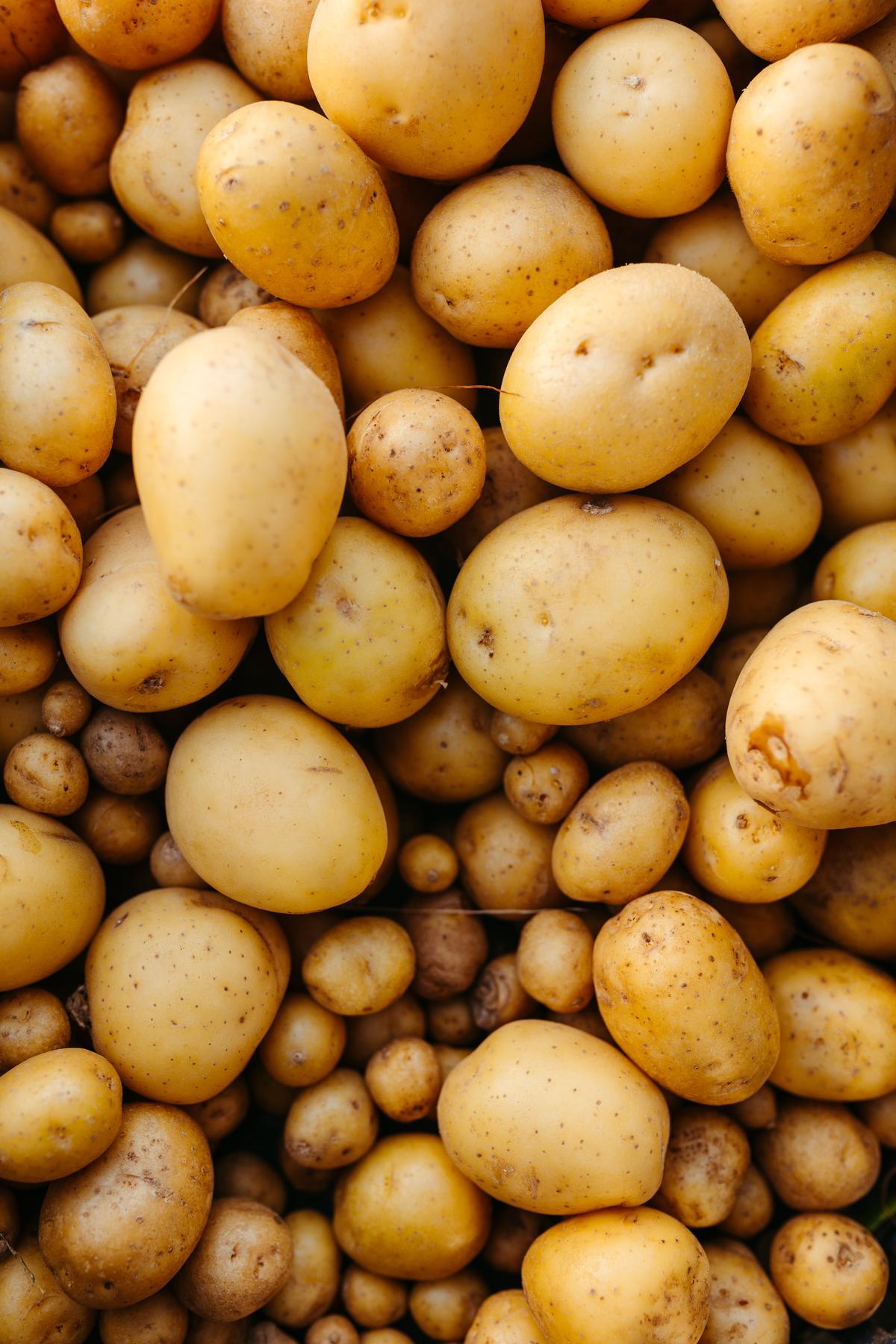Plunging Potatoes: A Guide on Depth

The humble potato, a staple in many diets worldwide, is more complex than it might initially appear. Spanning varieties like russet, red, and Yukon gold, each type may have its own unique planting needs, including the optimal depth for plantation. As we delve into the intriguing world of potatoes, we will journey through various planting techniques such as trench and hill planting, understanding the relevance of depth in each case. Additionally, we will also unfold the crucial roles of soil type and climate in determining the best planting depths for these versatile tubers.
Understanding Potato Varieties
Headlining: Delving into the Diverse World of Potatoes: Varieties and Planting Depths Unearthed!
Excitement is bubbling in the potato-growing community as we dig deeper into the intriguing world of tubers! Not all potatoes are created equal and understanding the variations in types and optimal planting depths is crucial to nurturing a successful crop. Here’s the scoop to get you digging in and bringing this vital hobby to life!
Start gravity-defying spuds!
Step One: Recognizing the Different Types of Potatoes
Potatoes, the stalwarts of many kitchens worldwide, are surprisingly diverse. From the hearty Russets to the buttery Yukons, each type of potato supports a specific culinary purpose. Let’s start off with a simplified rundown of the most common types:
- Russet Potatoes: Renowned for the classic baked potato, russets have rough, semisweet flesh that crisps up beautifully in the oven. Their low moisture and high-starch content make them an excellent choice for fries too.
- Yukon Gold Potatoes: With their moist, yellowish flesh and velvety texture, Yukons are a fantastic all-rounder. These medium-starch spuds are perfect for boiling, baking, mashing, and frying.
- Red Potatoes: Smaller and rounder with a waxy texture, red potatoes are great for roasting, grilling, and in salads. Their thin, red skin adds a vibrant color to any dish.
- Fingerling Potatoes: As the name suggests, these potatoes are small, long, and narrow, resembling fingers. They’re perfect for roasting whole and using in salads.
Now, these are just some of the many varieties out there! It’s genuinely impressive how many styles of these humble, tuberous risers exist.
Step Two: Navigating the Depths of Planting Potatoes
When talking about planting potatoes, depth becomes a top-tier concern. While planting methods do vary, in general, hobbyist cultivators can follow a straightforward guideline:
For early-season potatoes, plant them 3″ deep. On the other hand, mid-season and late-season potatoes fare better when planted roughly 5″ to 6″ deep. It’s fascinating how these potato types are so similar, yet their growing conditions vary.
Let’s be clear, though: It’s not just a matter of putting your potato in a hole and calling it good! Soil preparation, chit (pre-sprouting), and providing good drainage are all integral parts of the process.
One Last Tidbit
Want a little spud insider tip? Potatoes will break surface surprisingly quickly after planting. To prevent the growth of detrimental green spots (which are mildly toxic!), just remember to keep consistently adding light, fluffy soil or mulch atop your newly sprouted plants – we call this “hilling”.
And there you have it, fellow spud enthusiasts! With just a handful of fundamental factors, including the types of potatoes you want to grow and understanding proper planting depths, we’ve dug into the underground world of tuber cultivation. Now, it’s time to quite literally, get your hands dirty and create your luscious potato patch. Happy growing!

Photo by lmablankers on Unsplash
Potato Planting Techniques
Diverse Approaches to Potato Planting: Digging Deeper into Planting Depths
Every tuber-farming enthusiast knows that one of the sublime pleasures in the gardening world is here – it’s potato planting time! While we’ve previously explored such aspects as the distinct culinary purposes of different potato varieties, the intricacies of soil prep, chitting, and ensuring top-notch drainage, it’s now time to delve into an often overlooked but equally vital topic – the various methods of planting potatoes and just how deep each technique requires!
1. Traditional Trench Method:
Let’s kick start our journey with the most common method – the traditional trench technique. This method entails digging a trench about 6-8 inches deep and setting the potato seed with the eyes facing upwards. After positioning the seed potato, back-fill the trench with four inches of soil. Wait, there’s a pause in this process! Over the coming weeks, as they grow above the soil, continue to hill up the soil around the plants, until you build up around 6 inches of loose soil encompassing the base.
2. Raised Bed Approach:
Perfect for gardeners valuing convenience and eager to save some bending effort, the raised bed technique is a blessing. Plant those lovely tubers about 3-4 inches deep and space them around 1 foot apart in all directions. When it’s hilling time, add about 6 inches of straw, leaves, or compost to the bed’s surface. This method ensures both an easy harvest and significant pest deterrent!
3. Container Planting Method:
Hey city slickers, do not despair! You can surely enjoy homegrown spuds with the container planting method. A robustly built container which is about 2-3 feet deep is an ideal choice. Lay in about 4 inches of soil, pop in your chitted potatoes about 4 inches deep, and await sprout emergence. When the shoots are 8 inches tall, hill them in with compost leaving just the top couple of inches exposed.
4. No-Dig (or Straw Mulch) Method:
Hailing all gardening innovators! Challenge the norms with this labor-saving method! Simply lay your seed potatoes directly on top of prepared soil and cover them with a foot-high layer of straw, hence often referred to as the straw mulch method.
5. Wood Box Method:
This is for seasoned hobbyists intrigued by new dimensions! Construct a wooden box without a bottom and about a foot tall. After it’s filled with six inches of soil, place your seed potatoes, then cover them in 3 more inches of soil. As plants grow, add more sides to the box, filling in with extra soil or compost. It’s a continual process until you get a skyscraper of a garden!
Now, dear gardeners, armed with this blooming knowledge, venture into your gardens with renewed enthusiasm, and remember: the only thing that stands between you and a bountiful harvest is a bit of earth and sky!

Photo by jonathanborba on Unsplash
The Impact of Soil and Climate
Coming up is a boiling pot of knowledge – a deep dive into how soil type and climate influence the depth of potato planting.
First, let’s dig into the soil matter. Sandy soil versus clay soil: What’s the difference, and why should you care? Sandy soil possesses larger particle sizes which allow it to drain quickly. This makes sandy soil ideal for spring planting when the precipitation rate is high, saving your precious potatoes from the misery of waterlogging. Potatoes thrive in this type of soil, as it allows the tubers to expand with ease. In this case, the potatoes can be evenly planted at approximately 3 to 4 inches deep.
Next in line to discuss is clay soil, which is known for its smaller particle size and slow drainage capacity. Plant this one up in your mind: Clay soil compacts easily, hindering the expansion of potato tubers. Hence, gardeners who are stuck with clay soil will find success planting their tubers at a shallow depth of 2 to 3 inches, which will also aid in warding off the menacing waterlogging issue.
Now let’s venture into the effect of climatic conditions on potato planting depth. In regions with a cooler climate, keep it a bit deeper – the potatoes, that is – as this helps to protect them from the chilling air above. The perfect spot for them lies somewhere about 4 to 5 inches below the surface.
In warmer regions where the heat can be intense, planting at a shallower depth makes for happy potatoes, as it keeps them away from the oven-like temperatures deeper underground. In these conditions, pop your potatoes approximately 2 to 3 inches beneath the surface for best results.
This conversation also has to entertain the matter of erratic weather, which calls for a bit of strategic ambiguity. If the climate of your garden is characterized by rapidly changing weather conditions, it’s beneficial to put your potatoes at varying depths. This gives them a broader range of turf to accommodate these changes without compromising their growth.
By now, it should be clear as daylight that soil type and climate have profound effects on the depth at which potatoes should be planted. Steeped in this knowledge, you’re on your way to harvest the fruits, or more accurately, the tubers of this wisdom. Happy planting!

From our exploration into the multifaceted world of potato planting, it is clear that a successful harvest is about more than just digging a hole and placing a tuber inside. The type of potato, the planting technique used, and the local climate and soil type all have a significant say in how deep a potato should be planted. By blending the scientific insights with practical wisdom, anyone, from backyard hobbyists to commercial farmers, can make informed decisions to optimize their potato yield. And remember, as with any farming endeavor, patience and persistent care are as crucial for reaping a plentiful potato crop as understanding the intricacies of planting depths.



